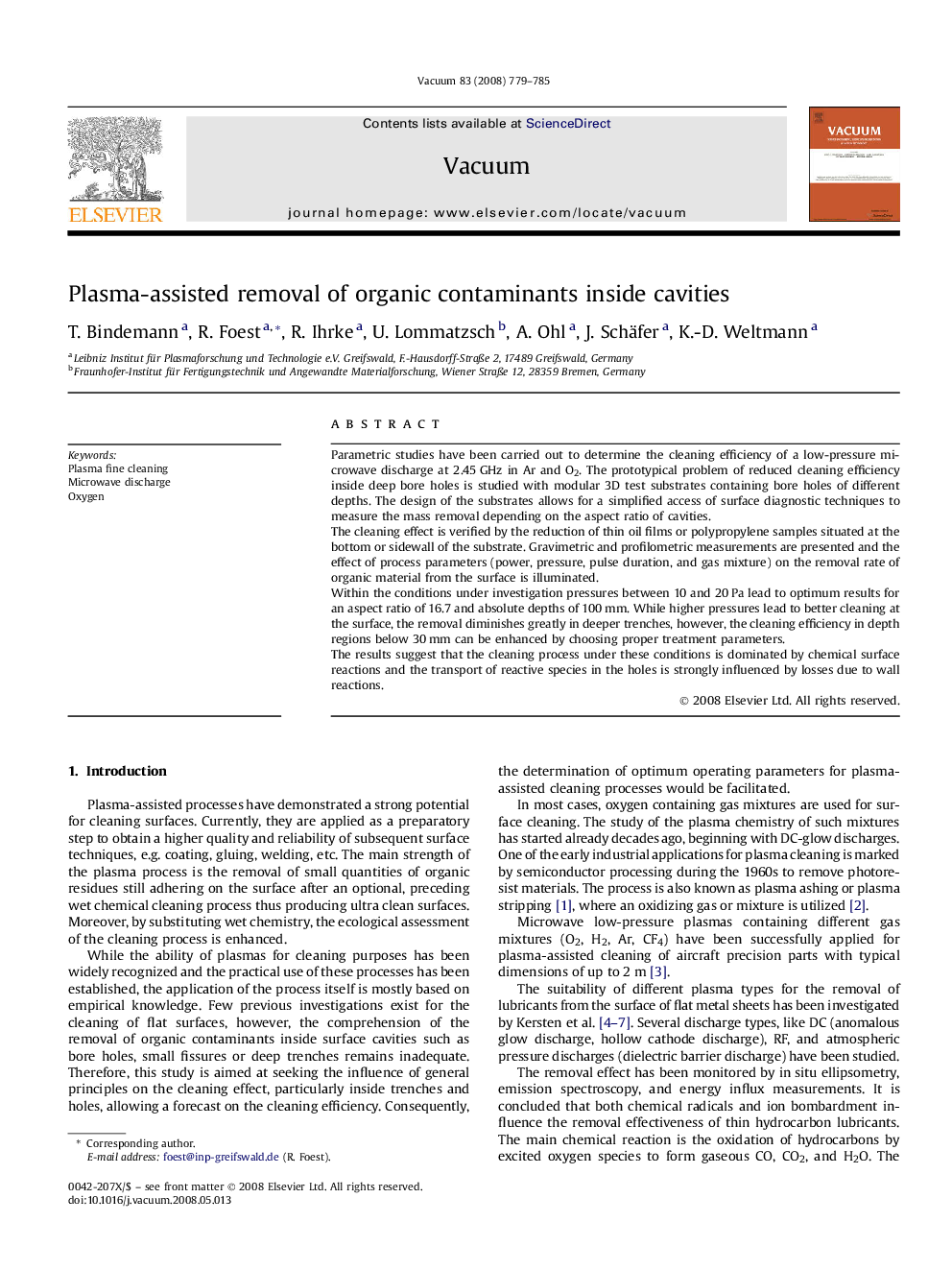| Article ID | Journal | Published Year | Pages | File Type |
|---|---|---|---|---|
| 1689955 | Vacuum | 2008 | 7 Pages |
Parametric studies have been carried out to determine the cleaning efficiency of a low-pressure microwave discharge at 2.45 GHz in Ar and O2. The prototypical problem of reduced cleaning efficiency inside deep bore holes is studied with modular 3D test substrates containing bore holes of different depths. The design of the substrates allows for a simplified access of surface diagnostic techniques to measure the mass removal depending on the aspect ratio of cavities.The cleaning effect is verified by the reduction of thin oil films or polypropylene samples situated at the bottom or sidewall of the substrate. Gravimetric and profilometric measurements are presented and the effect of process parameters (power, pressure, pulse duration, and gas mixture) on the removal rate of organic material from the surface is illuminated.Within the conditions under investigation pressures between 10 and 20 Pa lead to optimum results for an aspect ratio of 16.7 and absolute depths of 100 mm. While higher pressures lead to better cleaning at the surface, the removal diminishes greatly in deeper trenches, however, the cleaning efficiency in depth regions below 30 mm can be enhanced by choosing proper treatment parameters.The results suggest that the cleaning process under these conditions is dominated by chemical surface reactions and the transport of reactive species in the holes is strongly influenced by losses due to wall reactions.
